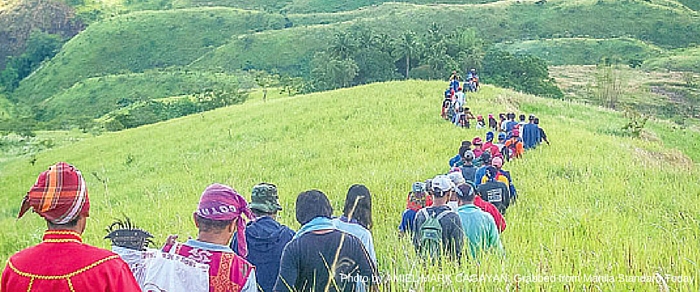Migration has always played an integral role in the formation of histories and societies. And for Dr. Eduardo Climaco Tadem of the UP Asian Center, that phenomenon is a matter scholarly interest as it is of personal and family history. In an essay published in the Inquirer, Dr. Tadem reflects on three Teduray sisters—his great-grandparents—who made a perilous journey from Cotabato to Zamboanga in the late 1880s. Their story offers a small window into Mindanao’s social history, one that involves migration, religious conversion, and late-nineteenth century anticolonial politics.
“I have often wondered what made the Borromeo sisters risk leaving Tamontaka for an unknown destination. And why, if they were Teduray, did they have Christian names? One of the mysteries was unraveled when I read Jesuit historian Miguel A. Bernad’s “The Tamontaca Experiment in Southern Mindanao: 1861-1899” (2004), Nicholas P. Cushner’s “The Abandonment of the Tamontaca Reduction” (1964) and Jose S. Arcilla’s “The Return of the Jesuits to Mindanao” (1978). Tamontaka was the first of the Spanish garrisons established in the 1860s, when the Manila government decided to permanently occupy strategic areas in Mindanao. Later Jesuit friars arrived and began converting the Teduray who lived on the outskirts. That explained the Borromeo appellation, as well as the sisters’ given names.”
Dr. Tadem shares that “a farming community soon arose around the Jesuit mission that came to own “a large tract of land planted to various crops like rice, corn, coffee, cacao, coconut and fruit trees, and had a herd of carabao….The farm surplus supported the mission’s activities, including an orphanage of ransomed slave children. He continues, “….by 1866, there were 667 Teduray in the mission; as late as 1879, there were only 160 former slave children."
In 1899, the Jesuits abandoned Tamontaka “to escape increasing harassment by Muslims emboldened by the transfer of Philippine sovereignty from Spain to the United States. The friars were also aware that the American southward expansion would first target Cotabato, as this was the Mindanao headquarters of the Spanish military command. The deteriorating situation and the impending dismantling of the Spanish garrisons convinced the friars to immediately evacuate Tamontaka. The Jesuits’ decision to uproot the Teduray from their ancestral lands was self-serving: It was meant to preserve the gains of their evangelizing mission. Zamboanga had a well-fortified Spanish garrison (Fort Pilar) and a Jesuit presence to ensure that the conversion of the “pagan” Teduray would not be reversed.”
However, Dr. Tadem shares that the three Teduray sisters did not join the 1899 exodus, but had migrated to Zamboanga much earlier in the late 1880s in what was an “intrepid journey...made even more perilous and fraught with untold hazards.” And "....within two generations, the Borromeo-Climaco union produced one of the country’s democracy icons—the maverick Cesar C. Climaco, twice city mayor, former Macapagal Cabinet member and an uncompromising opponent of Ferdinand Marcos’ martial law regime. His assassination in 1984, wrongly blamed on a Muslim rebel, is unsolved to this day.”
The Asian Center offers M.A. degrees in Asian Studies with four fields of specialization: Northeast Asia, Southeast Asia, South Asia, and West Asia. The Center also has an M.A. program in Philippine Studies that allows students to major in Philippine society and culture, Philippine foreign relations, or Philippine development studies. The Center offers a Ph.D. program in Philippine Studies in conjunction with the College of Arts and Letters and the College of Social Sciences and Philosophy. For an overview of these graduate programs, click here. The Asian Center also publishes Asian Studies: Journal of Critical Perspectives on Asia, the latest issue of which can be downloaded at the journal's website. For other news and upcoming events at the Asian Center, click here.


